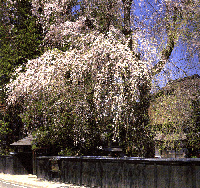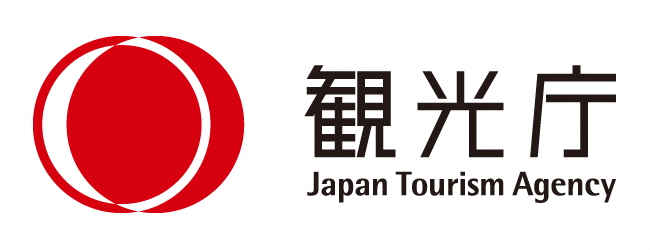The Weeping Cherry Trees of Kakunodate

Weeping cherry trees (shidarezakura) have been a feature of Kakunodate’s landscape since its early years as a castle town during the rule of the Tokugawa shogunate (1603–1868).
Weeping cherry trees are a man-made cultivar and are quite hardy; able to survive for potentially hundreds of years with regular care. The trees are thought to have been introduced to Kakunodate by the Satake-Kita, a family of senior-ranking retainers who served the daimyo lords of Akita domain for most of the Edo period (1603–1867). The Satake-Kita had roots in the old capital of Kyoto and even after moving to Kakunodate, the family continued to conduct business with Kyoto merchants and maintain residences there. This led to a constant exchange of people, culture, and goods between Kyoto and Kakunodate, including cherry trees.
According to oral tradition, three cherry tree saplings were brought to Kakunodate in 1664 from Kyoto by the bride of Satake-Kita Yoshiaki (1643–1699) as part of her dowry. Remarkably, the saplings did not wilt during their monthlong journey from Kyoto to Kakunodate. The weeping cherry trees that grow in Kakunodate’s samurai district are believed to originate from these saplings. Of the 400 trees within the city limits today, 162 are designated Natural Monuments. Two of the trees are estimated to be over 300 years old.
Each spring, over a million people from around the world come to see the white and pink blossoms of Kakunodate’s cherry trees.
- Location
- Higashikatsurakucho, Kakunodate, etc.
- Contact Info
- Semboku City Tourism Information Center "Kakunodate Ekimae-Gura": 0187-54-2700
- Traffic access
- Twenty minutes on foot from JR Kakunodate Station
Akita Airport Liner

- Access
- Sightseeing Spots
- Choose from areas
- Hachimantai/Tamagawa
- Nyutou
- Tazawako Plateau/Mizusawa/Komagatake
- Tazawako
- Dakigaeri/Jindai/Shiraiwa
- Nishiki
- Kakunodate
- Seasonal Recomendations
- Lists by Season
- Campgrounds
- Products
- Other
